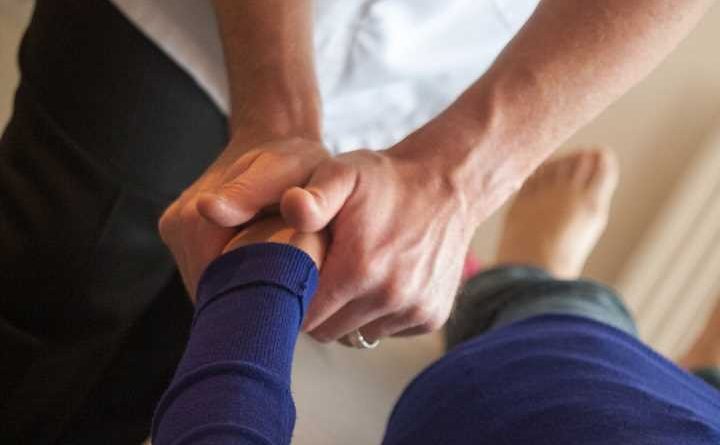Racial, ethnic disparities persist in access to chiropractic care, physical rehabilitation for adults with low back pain

Low back pain is the leading cause of disability worldwide and a major driver of health care costs in the United States, according to the World Health Organization. Over the last 20 years, recommended treatment of low back pain has shifted from use of pain medications including opioids to early use of nonpharmacologic treatments such as spinal manipulation and therapeutic exercise, which are commonly provided by chiropractors and physical therapists.
However, while nearly all Americans will experience back pain at some point in their lives, most Americans have never tried chiropractic care or physical therapy.
New research published in the Journal of General Internal Medicine from Boston Medical Center has discovered that the use of chiropractic care or physical rehabilitation, including occupational therapy or physical therapy, increased modestly for adults from 2002 to 2018, with only one-third of Americans with low back pain seeking these common non-pharmacological treatments in 2018.
Researchers also found that chiropractic care or physical rehabilitation use was less likely among Hispanic versus non-Hispanic adults with low back pain. Black Americans were as likely as white Americans to access occupational therapy or physical therapy, but half as likely to access chiropractic care.
Furthermore, while access to occupational therapy or physical therapy was generally similar among Americans with various incomes and insurance providers, use of chiropractic care was low among low-income adults and those with public health insurance. There remains a need to understand the causes of racial and ethnic disparities in access to chiropractic care, occupational therapy, or physical therapy.
The authors found that there are gaps in access that are strongly associated with income, insurance status and other factors that could be addressed with policy changes to improve access in Medicaid populations and low-income communities.
“Chiropractic care and physical therapy are among the best options we have for treating low back pain, and can help reduce reliance on treating pain with opioids and other pain medications,” said lead author Eric J. Roseen, DC, Ph.D., Director of the Program for Integrative Medicine and Health Disparities at Boston Medical Center, and Assistant Professor of Medicine at Boston University Chobanian & Avedisian School of Medicine.
“Guidelines released during the study period went from recommending these approaches as second line treatment, after other treatments fail, to first line treatment to be used before traditional pain medications. While the modest increases in use of these treatments we observed may be a sign of guideline adoption, most Americans with back pain are not receiving this type of care,” added Dr. Roseen.
Chiropractic care and physical rehabilitation are evidence-based approaches for managing low back pain, a very common and disabling health condition. The strength of evidence for these treatments has increased over the past 20 years, and guidelines from the American College of Physicians now strongly recommend these as initial treatment for acute or chronic low back pain.
Researchers used data from the CDC’s National Health Interview study from 2002 to 2018 involving 146,087 Americans who experienced low back pain in the prior three months to see if they had accessed chiropractic care or physical rehabilitation in the prior year, and to understand whether access to these services is equitable and how this has changed over time.
Between 2002 and 2018, only one-third of adults with lower back pain reported use of either chiropractic care or physical rehabilitation, including occupational and physical therapy. Rates did not change until 2016 when uptake among adults modestly increased with the introduction of new clinical guidelines, but disparities by race and ethnicity remained despite the stronger recommendations.
Researchers believe that health insurance and policy changes are needed to increase access to non-pharmacological care for low back pain, particularly in underserved communities. Researchers pointed to stigma around pain treatment and specific guideline-recommended treatments that may also limit use of chiropractic care, physical therapy or occupational therapy.
“Understanding and addressing the causes of racial and ethnic inequities in access to chiropractic care and physical therapy in underserved communities is an important part of improving pain outcomes for all Americans,” Roseen said.
More information:
Eric J. Roseen et al, Trends in Chiropractic Care and Physical Rehabilitation Use Among Adults with Low Back Pain in the United States, 2002 to 2018, Journal of General Internal Medicine (2023). DOI: 10.1007/s11606-023-08438-3
Journal information:
Journal of General Internal Medicine
Source: Read Full Article
